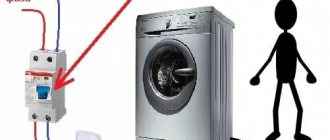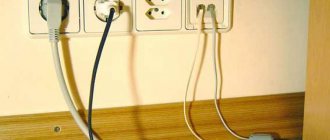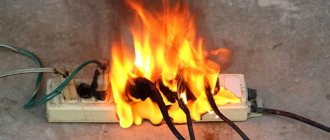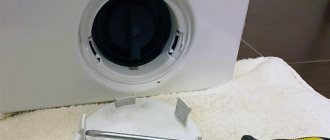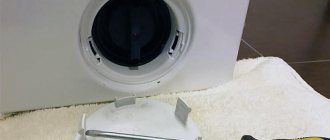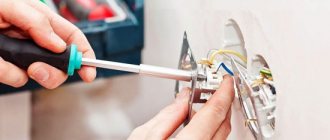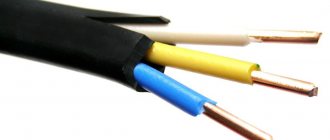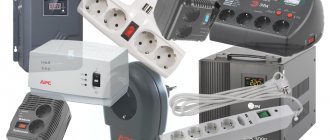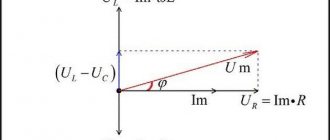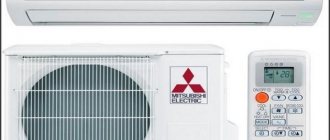For people who do not have in-depth knowledge of electrical engineering, the term residual current device (RCD) will not say anything specific. And many houses and apartments still do not have such a device. Although it is definitely worth installing in rooms with a large number of electrical appliances (for example, a kitchen or bathroom).
This device is designed to protect people and electrical equipment from accidental electric shock or leakage of electric current.
It is also possible to install a differential automatic machine (difavtomat) instead of an RCD. The general principle of operation of the difavtomat is similar to a residual current device, but has several additional functions: protection not only against current leakage, but also against short circuits and overloads in the electrical network. An automatic switch is also installed in its design.
Externally, it looks like a small plastic box with a toggle switch and several holes for connecting electrical wires. But the apparent simplicity of the design has no analogues.
The operating principle of the RCD is quite simple. The device constantly “compares” the current going to electrical appliances with the current coming from them, and if a difference occurs, it automatically turns off the power grid. But there are still drawbacks to this design. If, during an electric shock to a person, the current does not leave the closed circuit (is not grounded), the RCD does not trip because it “does not see” the voltage leak.
Why do you need an RCD for a washing machine?
The washing machine is a powerful consumer that loads the wiring. That is why it is recommended to lay a separate power line and install automation. A TV or computer does not need a separate RCD, so why does it need to be installed on a washing machine? Working in conditions of high humidity automatically places it in a risk group, which means that special attention is required to ensure the safety of both the equipment itself and its users.
If we are talking about an expensive drying device, then one protective device will not be enough - you will need several. The maximum power consumption of the washing machine is 2.5–3 kW. This is a lot for old electrical networks - you can’t do without protection.
What to look for when choosing an extension cord
There are not always enough sockets to connect electrical appliances or they are located in a remote location. Then you have to use an extension cord or a carrier, as they are often called.
You can’t do without it at a construction site, especially when you have to work with power tools at height or somewhere in the yard.
This is an indispensable product in everyday life and work, so let’s figure out how to choose an extension cord and which one is best for connecting household appliances, power tools and other types of equipment!
Cross-section, length and type of cable
The main thing to check when choosing is how much power or current the electrical extension cord can withstand. This information should be indicated on the packaging or determined by the product itself; now we will tell you in more detail.
Sometimes people mistakenly believe that if an amperage of 16A is written on a socket or plug, then the entire extension cord will withstand this current - this is not a fact! To select the appropriate amperage, some electricians use rules like:
10 A per 1 sq. mm cross-section of conductor
And this works in most cases, albeit with minor deviations. That is, an electrical extension cord with a core cross-sectional area:
- 0.75 sq. mm – suitable for 6 A;
- 1 sq. mm – 10 A;
- 1.5 sq. mm – 16 A;
Extension cords of long length (from 25 or 50 meters, including those made in the form of a coil) are made with wire with a TPG cross-section of 2.5 square meters. mm. Firstly, to reduce losses, and secondly, to make the product more durable.
But for everyday tasks, such as connecting a washing machine or for a heater, it is enough to choose an extension cord 5-7 meters long with a conductor cross-section of 1.5 square meters. mm.
Electrical wire of the PVA brand is excellent for the extension cord. It has thick insulation, a round cross-section, and the gap between the cores is filled with a dielectric, which improves performance properties and resistance to damage. It bends well, but this design is quite dense and an electrical extension cord with 2.5 square meter cores. mm it turns out to be quite heavy and voluminous.
This wire is perfect for assembling an extension cord with your own hands. Electricians often use a flat cord of the ShVVP brand. Its insulation is not very thick, compared to the previous example, but it is quite suitable for installation and permanent work, while at a construction site it will quickly become unusable.
And for work in difficult conditions, it is better to choose an electrical extension cord, which is made of KG cable.
So, first of all, the choice of an extension cord is based on the power of the equipment that you will connect to it, and the distance from its installation to the nearest outlet.
What other protection options are there?
RCDs are installed to protect people from electric shock, but they do not protect the electrical circuit from all possible risks. To prevent equipment breakdowns, an automatic circuit breaker is switched on in series with the RCD: it is designed to protect electrical circuits from short circuits and voltage surges.
How many amperes should the automatic protective equipment be designed for? Experts note the following pattern: when installing a device at 16 A, the RCD for the washing machine placed behind it must be designed for a higher current, for example 25 A. Protection can be provided in two ways:
- install an RCD and an automatic machine;
- installing a difavtomat is the best option.
What is it for?
The main requirement when installing an RCD on washing equipment
Before we talk about why an RCD is needed, let’s define those electrical circuit protection devices that every home needs to have. People uninitiated in the basics of electricians may confuse an RCD with a circuit breaker, which is also simply called a circuit breaker. This switch is an analogue of the well-known electrical plug with a fusible rate, which burned out if the current exceeded a certain value. However, unlike a stopper, this device is reusable and once it is triggered, when the toggle switch is turned on, it is ready for use again.
Typically, this circuit breaker cuts out the current supply during short circuits, which most often occur when the integrity of the insulation in the wiring is broken and the zero and phase are shorted. Thus, when the machine is triggered, the wiring or electrical content of household appliances is protected from damage and burnout, and the living space is protected from a possible fire. Household circuit breakers for residential premises with many electrical appliances must be rated for a current of at least 16 amperes. If the apartment has an electric stove, dishwasher and washing machine, electric water heater and other appliances with high energy consumption, then a circuit breaker of 25 amperes or more may be required.
Washing machine commissioning diagram
Let's consider a typical case with a washing machine when it is connected to a regular single-phase network without grounding. Let's imagine that for one of the reasons (due to old age, wear or mechanical stress) the insulation on some phase conductor was damaged, as a result of which the phase voltage reached the metal body of the washing machine. This will not affect the operation of the washing machine in any way and its behavior will not cause any suspicion. But, if a person accidentally touches simultaneously its metal body and any conductive object that has an outlet to grounding, for example, a water faucet or a heating radiator, an electric shock may occur.
At best, a person will experience unpleasant sensations, an electric shock. At worst, cardiac arrest is possible. The currents flowing through the body will be quite small and will not reach the value at which the circuit breaker is knocked out. After all, for a fatal shock to a person, a current value of 50 mA is sufficient, and circuit breakers are designed for a current of 16 amperes or more. To avoid such cases, it is necessary to install an RCD.
It is impossible to connect an RCD without a difavtomat
The RCD is connected in series with the consumer (microwave oven, washing machine, etc.) and measures the difference in current at the input and output. Ideally, this difference should be zero. In other words, as much current came in, so much came out. For this reason, these devices are also called differential automatic machines. The name comes from the English verb Difference, which means difference, difference. If a difference is detected, then there is a leakage current.
When the magnitude of the leakage current reaches the value for which the RCD is designed to operate, it knocks out the current supply in a fraction of a second, excluding fatal injury to a person. Currents greater than 50 mA are dangerous for humans, as discussed above. Therefore, to protect life, devices with a leakage current of no more than 30 mA are used.
Let's return to the above-mentioned case with a washing machine connected to a regular single-phase network without grounding. When a person touches the body of such a machine, which is energized as a result of an insulation breakdown, the device will disconnect it from the network when it detects a leakage current passing through the person’s body.
The situation will be completely different if there is a grounding circuit. If a voltage breakdown occurs on the body of the washing machine, the current will flow through the phase-ground circuit. Therefore, the RCD immediately knocks out the power circuit, thereby ensuring safety.
How does an RCD machine work?
The well-being of household appliances in our homes often depends on worn-out electrical substations that are not designed for heavy loads. One power surge is enough to lose all electrically powered devices in one fell swoop. To save washing equipment from the vagaries of electrical networks, it is provided with a separate RCD. It consists of:
- housings;
- transformer;
- chain breaking mechanism;
- self-diagnosis mechanism;
- electromagnetic cut-off - it is available in the latest generation models.
Triggering occurs at critical loads, the machine, opening the circuit, stops the flow of electric current - people and equipment are safe.
A dangerous situation will occur, for example, if a person touches exposed wires or if water gets on him. The automation, when activated, prevents electric shock and damage to expensive equipment. The sensor can be triggered many times and, unlike fuses, does not need to be changed.
Operating principle of the machine
In the standard version, the device has a housing made of plastic material, a transformer, a relay, a release, and a self-testing mechanism. New devices are additionally equipped with electromagnetic cut-offs.
In the normal state of the network, the relay device does not work, but when there is an increased load on the wiring, the built-in device will forcibly break the circuit, de-energizing it.
A similar situation is possible due to power surges or moisture getting on exposed wires. When the protection is triggered, there is no need to change it. The main difference between an RCD for a washing machine is that it is intended for repeated use.
How to connect a washing machine to the mains?
It’s not enough to buy a washing machine, you also need to connect it correctly. When all pipes are connected, electrical work begins. Installation rules:
- Do not use the washing machine without grounding.
- Do not use extension cords. It is also not recommended to use a special extension cord with an RCD.
- In rooms with a high moisture content, sockets must be installed in a moisture-proof housing.
- Connect the washing machine through a protective device.
What types of RCDs and differential circuit breakers are there based on the type of current leakage?
Electrical circuits use different types of currents, which is why protective devices are usually divided into classes:
- AC type. This is a common class of devices that have a budget price, so they are often used in apartments and country houses. They are calculated for the leakage of alternating current, on which most household appliances operate.
- Type A. Allows you to detect both AC and DC leakage. In recent years, manufacturers have begun to produce devices adapted specifically for such RCDs. Switching power supplies are used here to regulate power. Since these are more reliable devices, they cost a little more than the previous ones.
- Type B. These RCDs also react to any current leakage. However, they are often used only at production facilities and in public places. It makes no sense to install them in an apartment.
The marking by which the class is determined is located on the body of the device
Which RCD should I install on my washing machine?
The average user wants to know which protective device to install on the washing machine. Most models consume 2 kW, and this exceeds the nominal value of 10 A. Therefore, an automatic or automatic device must operate with an electric current greater than 10 A. Choose the 16 A option.
Among the important parameters of automatic protection is leakage current. The device reacts precisely to it. If the wiring is new, take the 10 mA option. For a circuit break to occur, the difference in current between phase and neutral must be 10 mA or more. If the wiring is old, use a 30 mA RCD to avoid erroneous shutdowns.
Another nuance that is important to pay attention to when choosing an automatic machine to connect to a washing machine is the manufacturer. There are two options:
- Expensive and high quality - Legrand or ABB.
- Budget - IEK.
These are the most famous companies on the market that produce protective automation. Chinese versions are cheaper, but they will not provide the reliability that European devices provide. If you select the wrong power and electric current, the plugs will be knocked out every time you start the machine.
Why does the security system knock out?
There are often cases when, after installing a protection system, it is triggered every time you try to turn on the machine. This problem can be caused both by the characteristics of the power system and by the incorrect choice of equipment and its connection diagram.
- The low load capacity of the network causes sharp voltage surges when switching powerful equipment. The machine, changing operating modes, triggers the protection. To fix this problem, it is recommended to use a voltage stabilizer.
- The elements of the protective system are not connected correctly. The most common mistake made by users is incorrect connection of the phase and neutral wires.
- An incorrect choice of equipment was made based on power or other network parameters. For example, the rating of a difavtomat or RCD does not allow working with the machine.
- A short circuit occurs in the machine connection cable or wiring line due to damage or violation of the parameters (depletion, cracking) of the insulation. Leakage currents or short circuit mode trigger the protection.
- One or more devices of the protection complex are inoperative or operating incorrectly.
- Abnormal operating conditions occur in the engineering circuits of the washing machine. For example, excess current consumption due to heater malfunctions, errors in the electronics control unit, short circuit of the motor windings.
The most dangerous situation, which is often ignored by consumers, is the physical excess of the leakage current indicators to the RCD rating. The protection works absolutely correctly. But the owner is not happy with this.
Instead of eliminating the problem in the form of wet live parts with damaged insulation, the user installs an RCD with a higher response rating or completely removes the control unit. This should not be done under any circumstances. If the protection is triggered, you need to carefully analyze the causes and eliminate problem areas.
What kind of automatic rifle do you need?
When making a choice, pay attention to the following parameters:
- Power. Corresponds to the power of the network (single- or three-phase).
- Voltage. For a single-phase network - 220 V, for a three-phase network - 380 V.
- Denomination In household networks, it is best to install machines marked with the letter “C”. For a network with a socket, option C 16 is preferable. Sometimes type C 25 is used.
- Built-in safety switch. Which washing machine to choose? It is recommended to take A-class. There is also an AC class, but this option is not so good for powerful loads.
- Additional protective automation. Lack of protection against wire breakage - zero, will cause the RCD to fail to operate if one of the wires malfunctions.
- Differential trip current. The best option is 30 mA. There are 10 mA ones - more expensive, their use is not rational.
Differential circuit breakers designed for current protection also disconnect the load when differential currents appear. The latter can appear during a breakdown of insulation on the housing - then the currents, inflows and outflows, are not the same. When this difference appears, the device breaks the circuit and electric shock is excluded. If a person touches live parts, the electric current flowing through him will not have time to grow to a dangerous value of 0.1 A.
Reasons for disconnecting the RCD
This may happen in the following cases:
- if the machine itself malfunctions,
- if an error is made during installation work,
- the power cord has shorted out,
- the device you selected did not meet its parameters,
- The rotor, heating element or electrical unit of the washing machine has failed.
We recommend that you take care of the safety of your family members so as not to eliminate negative consequences in the future.
Installing a residual current device yourself
It is not difficult to install current protection. You will need a 3x2.5 mm VVG wire - it is pulled from the switchboard. The procedure is as follows:
- Using the indicator, phase and zero are determined.
- Connect the found conductors to the RCD.
- The wires are removed from the housing and the socket is connected to the RCD.
This is the simplest connection diagram. If, in addition to the washing machine, other consumers will be connected to the network, install an additional protective device. This will ensure uninterrupted operation for all consumers.
The difavtomat is installed in the same way. Thanks to this device, your washing machine will be reliably protected from dangerous power surges that can hopelessly damage any of its components - motor, control unit, pump, etc., and you - from electric shock.
When installing the washing machine in the bathroom, the outlet must be:
- moisture-proof;
- grounded.
If washing is in progress, it is better not to take a bath: if water splashes into the socket, a short circuit may occur and an electric shock may occur. After completing the cycle, remove the plug from the socket and close the lid of the socket tightly. All laid wires are protected with plastic corrugations. The wiring is located as high as possible from the floor. The ideal solution is a separate wire for the washing machine. Its minimum cross-section is 2.5 m². The socket and protective automatic equipment must be located so that in the event of a breakdown, the equipment can be easily switched off.
Installation and connection
The easiest way to connect to a washing machine is a differential machine. This device is two-pole. The input is connected to the wiring wires; the phase sequence must be observed: the purpose of the contacts is indicated in the technical data sheet of the device. If a voltage stabilizer is used in the power supply system of the machine, it is recommended to install it after the automatic machine.
The outputs of the differential block are led directly to the socket of the washing machine. For proper operation of the system, grounding must be done. Its wire is connected to the corresponding contact of the washing machine.
The switching circuit using separate units of a residual current circuit breaker and an RCD is also not difficult. The last block is two-pole. Switching is carried out according to the following scheme:
- the wiring phase is connected to the input of the circuit breaker;
- the AO output is connected to the phase contact at the RCD input;
- wire zero is supplied to the second contact of the RCD input group;
- two outputs of the residual current device are connected to a socket to power the machine.
In such a circuit, it is also necessary to use grounding. The wire is connected to the power socket of the machine. It is recommended to select devices at nominal value for switching of this kind with mutual technological reserves. The machine is installed with a rating that strictly corresponds to the peak power consumption of the machine. For example, 16 amperes.
In this case, it is recommended to select an RCD for significantly higher currents: 20 amperes or more. This will ensure that it remains operational in an emergency. The current in short circuit mode, leading to the cutoff of the machine, is not critical for the RCD and does not lead to an accident.
Practical advice for installing difavtomats
New houses are equipped with grounded sockets and a panel with protective devices. All that remains is to select an outlet and find out which machine it is connected to. If there is an RCD there, it needs to be dismantled and a circuit breaker installed.
In old houses everything is much more complicated. There is no grounding, there is no automatic protection either. They start with installing the ground loop. Three galvanized pipes are installed near the house or in the basement. Their length is from 50 cm. The pipes are positioned so that they are the vertices of a triangle. If it doesn’t work out, you can do it on one straight line. A wire is screwed to one pipe using a bolt - it is pulled into the apartment, to the panel.
The European socket for the washing machine is connected to the automatic machine installed in the panel specifically for this purpose. The device is selected taking into account the current consumed by the equipment. It is determined based on the rated power. Power, kW, is divided by voltage, V. Then 20% is added - this will be the average current. Take the option with a current equal to the calculated value or slightly greater.
Rated current
By rated current we mean the maximum amount of current that the device can withstand for a long time without melting or damaging its contacts and other components.
Roughly speaking, it will work as if nothing had happened, retaining all its protective functions.
Do not be confused, if this value is exceeded, the RCD will not turn off! The circuit breaker should do this for him.
The main rule here is that the rated current of the RCD must be equal to or be one step higher than the current of the circuit breaker protecting this section of the circuit. That is, a machine that is located after the RCD.
Please note that many manufacturers simply do not have an ouzo for 32A. Basically, this denomination is found only among Chinese comrades
Therefore, the choice in the plate Inom = 40A is due precisely to this.
If your RCD is located at the input, then its current should be one step greater than or equal to the current of the input circuit breaker.
When several consumers with different circuit breakers are connected to one RCD in a group, then focus on the sum of their currents.
But what if this amount turns out to be even greater than the current of the input switch? Then take into account the introductory machine.
If you are completely confused in these calculations, you can use a convenient mnemonic diagram for selecting an RCD from KonstArtStudio.
Just answer a couple of questions in the navigation blocks and you will get the desired result.
Example of calculating a difavtomat
Initial data:
- Power consumption - 2.2 kW.
- Rated current - 10 A.
20% margin = 2 A. It turns out that for a 2.2 kW washing machine you will need a device with 12 A or more. The best option is a shutdown current of 15 A. Choose the closest value. If 12 A comes out, you cannot install a 40 A device. This is dangerous for equipment. The differential shutdown current is 30 mA, no more.
Parameters and characteristics of difavtomats
To decide which RCD to install for a washing machine or water heater, first familiarize yourself with the basic parameters and characteristics of the device:
- Depending on which network the difavtomat will be installed in (single-phase or three-phase), a two-pole device (for an operating voltage of 220 V) or a four-pole device (380 V) is selected. Please note that the rated operating voltage must be indicated on the device body.
- Rated current. This is the amount of current, measured in amperes, that can pass through a switching device over a long period of time. The standard range of rated currents is as follows: 6, 10, 16, 20, 32, 40, 50, 63 A.
- Time-current characteristic (“B”, “C” or “D”), this parameter expresses the dependence of the response time of the machine on the current flowing through it.
- Rated differential current. This is the amount of current leakage to which the difavtomat will react and turn off. There is also a standard range of differential current - 10, 30, 100, 300, 500 mA.
- Rated breaking capacity. This parameter represents the maximum value of short circuit current that the differential circuit breaker is capable of switching off and remaining in working condition after that.
- Temperature Range. It usually varies from – 20 degrees to + 45.
All these parameters are indicated on the device body.
There you will find a connection diagram, the nominal frequency of the power supply (50 Hz), the type of built-in RCD (electronic or electromechanical).
Also, differential circuit breakers are of three types depending on the form of current leakage to which they react:
- “A” – for alternating sinusoidal and constant pulsating current forms.
- “AC” – for alternating sinusoidal current leakage.
- “B” – for alternating sinusoidal, constant pulsating and rectified forms of current leakage.
Why are extension cords banned?
The power wires transmit power of more than 2 kW. Therefore, all disconnecting connections must ensure perfect contact. This is possible with European sockets that have a large area of contacting contacts. But this cannot be done without losses, and extension cords only increase them. The consequence of losses is heating. Extension cords are often plugged into regular sockets - with the help of adapters, losses increase even more. Due to constant heating, contacts burn and plugs and sockets deteriorate. As a result, a fire occurs.
Connecting an RCD in an apartment
A typical diagram for connecting an RCD in an apartment is shown in the figure. It can be seen that the general RCD is switched on as close as possible to the input, but after the meter and the main (access) machine.
The inset also shows that in the TN-C system a general RCD cannot be turned on. If separate RCDs are needed for groups of consumers, they are turned on immediately BEHIND the corresponding machines, highlighted in yellow in the figure.
The rated current of secondary RCDs is taken a step or two higher than that of “your” machine: for VA-101-1/16 - 20 or 25 A; VA-101-1/32 - 40 or 50 A. But this is in new houses, and in old ones, where protection is most needed: there is no land, the wiring is poor? Someone there promised to enlighten me on the subject of connecting an RCD without ground. That's right, that's exactly what it came to.
- Remember, that:
- It is unacceptable to install a general RCD or a circuit breaker in an apartment with TN-C wiring.
- Potentially dangerous consumers must be protected by separate RCDs.
- The protective conductors of sockets or socket groups intended for connecting such consumers must be connected to the INPUT zero terminal of the RCD in the shortest possible way, see the diagram on the right.
- Cascade activation of RCDs is allowed, provided that the upper ones (closest to the electrical input RCDs) are less sensitive than the terminal ones.
A smart person, but unfamiliar with the intricacies of electrodynamics (which, by the way, many certified power electricians are guilty of) may object: “Wait, what’s the problem? We install a common RCD, connect all PEs to its input zero - and you’re done, the protective conductor is not switched, we are grounded without a ground!”
Yes, but not so. The PE segment with the corresponding zero segment and the equivalent consumer resistance R form a loop encircling the magnetic circuit of the differential transformer, see the operating principle of the RCD-D. That is, a PARASITIVE winding appears on the magnetic circuit, loaded at R. Although R is small (48.4 Ohm/kW), on a sine wave of 50 Hz the influence of the parasitic winding can be neglected: the radiation wavelength is 6000 km.
We also exclude the electromagnetic field of the installation and the cord to it from consideration. The first is concentrated inside the device, otherwise it will not pass certification and will not go on sale. In a cord, the wires pass close to each other, and their field is concentrated between them, regardless of frequency, this is the so-called. T-wave.
But in the event of a breakdown on the body of the electrical installation or in the presence of interference in the network, a short powerful current pulse jumps through the parasitic loop.
- Depending on specific factors (which can only be accurately calculated by a specialist with experience in scientific work and on a powerful computer), two options are possible:
- “Anti-differential” effect: a surge of current in the parasitic winding compensates for the imbalance of currents in phase and zero, and the RCD will, as they say, peacefully sniffle into the pillow when a crooked firebrand is already hanging on the wires. The case is extremely rare, but extremely dangerous.
- A “super-differential” effect is also possible: the pickup increases the imbalance of currents, and the RCD trips without leakage, prompting the owner to think painfully: why does the RCD trip every now and then if everything is in order in the apartment?
The magnitude of both effects depends strongly on the size of the parasitic loop; This is where her openness and “antenna” come into play. With a PE length of up to half a meter, the effects are negligible, but already with a length of 2 m, the probability of failure of the RCD increases to 0.01%. According to the numbers, this is small, but according to statistics - 1 chance in 10,000. When it comes to human life, this is unacceptable a lot of. And if in an apartment without grounding there is a web of “protective” conductors, then why be surprised if the RCD “knocks out” when you turn on the charging of your mobile phone.
In an apartment with an increased fire hazard, it is permissible, with the obligatory presence of individual consumer RCDs connected according to the recommended circuit, to install a general FIRE RCD with a 100 mA imbalance and with a rated current one step higher than that of the protective ones, regardless of the cut-off current of the machine.
In the example described above, for Khrushchev, you need to connect an RCD and an automatic machine, but not a automatic machine! When the machine is knocked out, the RCD must remain in operation, otherwise the likelihood of an accident increases sharply.
Therefore, the RCD in terms of its rating must be taken two steps higher than the machine (63 A for the disassembled example), and in terms of unbalance - one step higher than the final 30 mA (100 mA). Once again: in automatic machines the rating of the RCD is made one step higher than the cut-off current, so they are not suitable for wiring without ground.
